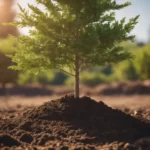Hummingbirds, with their iridescent feathers and rapid wingbeats, are a mesmerizing sight in gardens and wild areas. These tiny birds are attracted to certain colors, which can be leveraged to draw them into specific spaces. Understanding the color preferences of hummingbirds is essential for anyone looking to attract these birds to their garden. This article will explore the colors that are most effective in attracting hummingbirds and the reasons behind these preferences.
Hummingbirds
Hummingbirds are known for their unique feeding habits, primarily consuming nectar from flowers. Their vision plays a critical role in locating food sources, and they are particularly attracted to brightly colored objects. Unlike many other birds, hummingbirds do not have a strong sense of smell, so they rely heavily on visual cues to find nectar-rich flowers. This visual attraction to certain colors is a key aspect of their feeding behavior.
Colors That Attract Hummingbirds
There are specific colors that tend to be more attractive to hummingbirds than others. Understanding these preferences can help in designing gardens that are more appealing to these birds.
Red
The color red is famously associated with attracting hummingbirds. They seem to have a natural affinity for this color, often favoring red or shades of scarlet in flowers and feeders. The reason behind this preference is not entirely understood, but it is believed that red stands out clearly against green foliage, making it easier for hummingbirds to spot potential food sources. Flowers like the trumpet vine, bee balm, and salvia are excellent examples of red flora that attract hummingbirds.
Bright Pink and Purple
Apart from red, hummingbirds are also drawn to bright pink and purple. These colors are also vivid and can easily catch a hummingbird’s eye. Flowers such as lupines, foxgloves, and petunias are known for their ability to attract hummingbirds with their vibrant pink and purple hues.
Orange and Yellow
While not as predominant as red, orange, and yellow colors also attract hummingbirds. These warm hues can be found in flowers like the California fuchsia and lantana, which are popular among hummingbird enthusiasts.
Other Factors Influencing Attraction
While color plays a significant role in attracting hummingbirds, it is not the only factor. Other aspects of a flower, such as its nectar content, shape, and size, also influence a hummingbird’s choice.
Importance of Nectar
- Nectar is the primary reason hummingbirds visit flowers. The sugar content in nectar is a crucial energy source for these birds.
- Flowers with higher nectar production are more likely to attract hummingbirds, regardless of color.
- Gardeners can supplement natural nectar sources with hummingbird feeders filled with sugar water.
Role of Flower Shape and Size
- Hummingbirds are attracted to certain flower shapes that accommodate their feeding habits.
- Tubular flowers are particularly appealing as they are well-suited for the birds’ long beaks and tongues, allowing easy access to nectar.
- The size of the flower can also play a role, as hummingbirds prefer flowers that provide a stable platform to feed from.
Designing a Hummingbird-Friendly Garden
Creating a garden that attracts hummingbirds involves more than just planting brightly colored flowers. Here are some tips for designing a hummingbird-friendly garden:
- Variety of Colors: Incorporate a range of colors that attract hummingbirds, including red, pink, purple, orange, and yellow.
- Diverse Plant Types: Plant a mix of flowers that bloom at different times of the year to provide a continuous food source.
- Incorporate Feeders: Add hummingbird feeders with sugar water as an additional food source. Red feeders are particularly attractive but avoid using red dye in the sugar water, as it can be harmful to the birds.
- Provide Perches: Include trees, shrubs, or other perching spots where hummingbirds can rest and survey their surroundings.
- Water Sources: Consider adding a water feature, such as a fountain or misters, as hummingbirds enjoy bathing and flying through water mist.
Conclusion
Attracting hummingbirds to a garden involves a blend of color, nectar, and suitable habitat. The vibrant palette of red, pink, purple, orange, and yellow in flowers not only adds aesthetic beauty to a garden but also serves as a beacon for these fascinating birds. While color is a key attractor, the availability of nectar and appropriately shaped flowers are equally important in drawing hummingbirds. Adding feeders, providing perching and bathing spots, and ensuring a continuous bloom throughout the seasons further enhances a garden’s appeal to hummingbirds.
Creating a hummingbird-friendly garden is a rewarding endeavor. These birds contribute to the ecosystem by pollinating flowers as they feed on nectar. Their presence brings dynamic energy and a sense of wonder to any garden. Moreover, observing hummingbirds can be a delightful and educational experience, offering insights into their behavior and the broader ecological web.
In summary, the allure of hummingbirds lies not just in their mesmerizing flight and iridescent colors but also in their unique interaction with the garden environment. By understanding and catering to their preferences, gardeners can enjoy the dual benefits of a visually stunning garden and the joyful presence of hummingbirds. As nature’s avid pollinators, hummingbirds play a crucial role in the health of our ecosystems, making their attraction to gardens beneficial for both the environment and garden enthusiasts.



